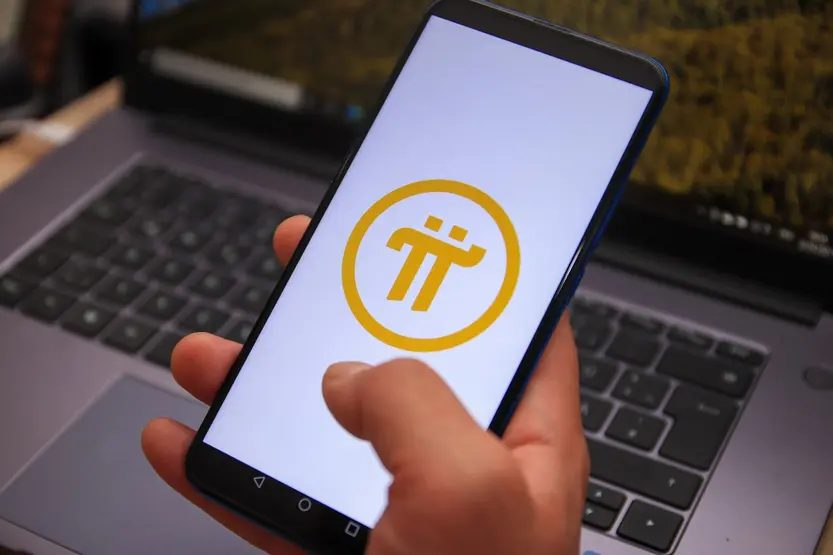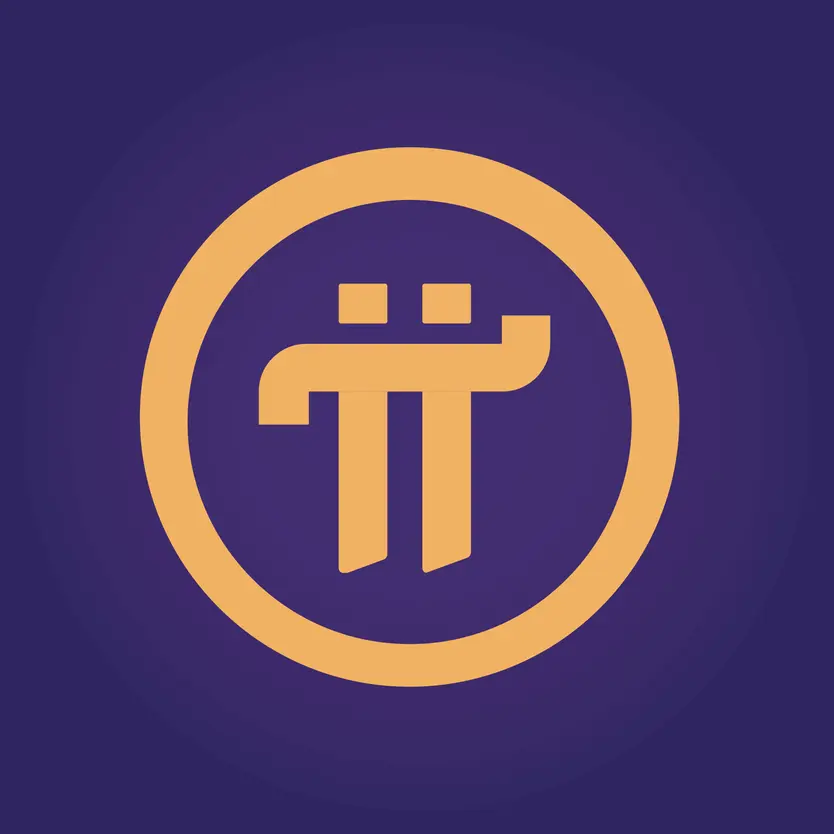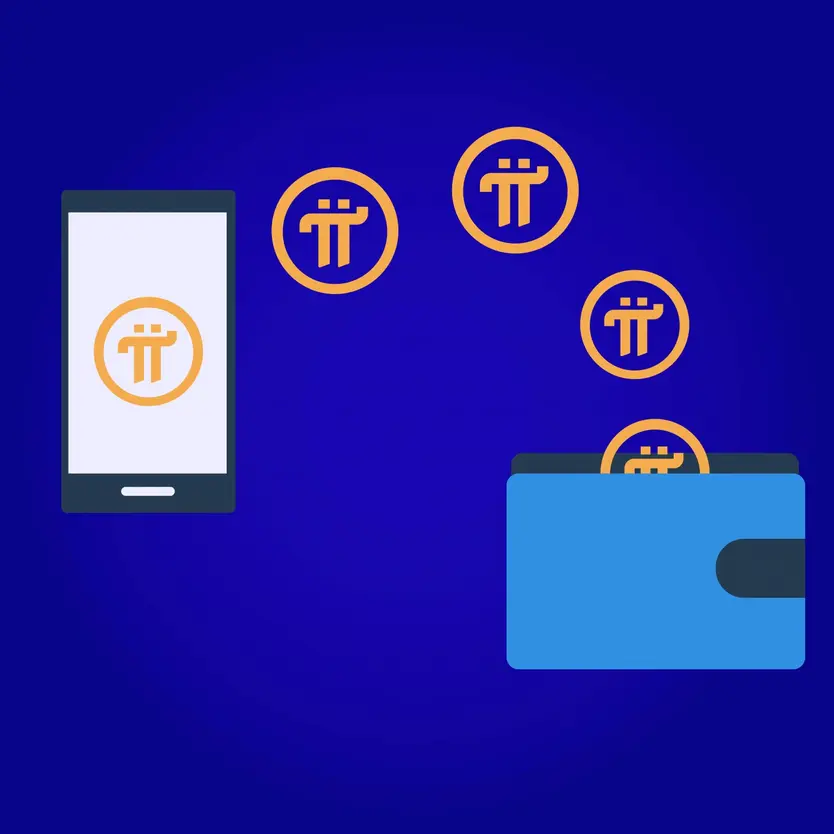Pi Network wants to bring mining to the masses. Can it succeed?

Contents
- Pi Network explained
- History of Pi
- The PI cryptocurrency
- PI’s availability
- Tech and security
- Scam concerns
- Unanswered questions
- FAQs
The Pi Network has been generating hype and controversy in equal measure recently. So, what is Pi network (PI)? What is Pi Network used for? And how does Pi Network work?
Pi Network explained
Pi Network aims to be the cryptocurrency that ultimately brings mining to the masses. While the traditional proof-of-work method of minting new crypto has garnered a lot of unwanted attention because of how much energy it consumes, PI makes use of something called the stellar consensus protocol. This allows certain users on the network, called nodes, to validate transactions on a distributed ledger and reach a consensus on the order of new transactions recorded on the ledger.
The nodes form groups of between three and five trusted people known to each of the network’s users. These then build a network that, at least in theory, stops fraudulent transactions, because transactions can only be validated if the trusted nodes approve them.
Another difference is that the currency is mined via a mobile phone application. While it might look as though this could use a lot of energy, the people behind the Pi Network argue that this is not the case, saying: “Pi secures its ledger when members vouch for each other as trustworthy. This forms a network of interlocking ‘security circles’ that determines who can execute transactions. This novel approach allows crypto mining on your phone by leveraging your existing social connections, with no financial cost, no battery drain and a light footprint on the planet.”
Within the Pi Network, there are four types of user:
- Pioneers. These people use the Pi Network mobile app every day, validating that they are not a robot, and mining the Pi Network cryptocurrency. They can also request transactions from other pioneers.
- Contributors. These use the app and make a list of pioneers they know and trust.
- Ambassadors. They introduce new users to the Pi app.
- Nodes. These people serve as both pioneers and contributors, but they also run the PI node software on their computers. As we have seen, they are responsible for validating transactions and creating the network of trust that helps to do so.
History of Pi
PI was founded by Nicolas Kokkalis and Chengdiao Fan. Both Kokkalis and Fan have PhDs from Stanford University in the United States, with Kokkalis holding one in computer science and Fang having a doctorate in computational anthropology. The concept of the Pi Network first came about in 2019, with the app launched that year. 2020 saw both its testnet launch and the number of active pioneers reach one million.
From late June 2021 until the end of September that year, Pi held its first hackathon, #BuildPi2gether, “a collaborative event where pioneers and developers join to build the future of Pi together”. It awarded a total of $100,000 and 100,000 PI to the leading projects in the categories of ecosystem and business apps.
On 25 November, the Pi Network said it had passed 29 million users. That’s an average 61,120 pioneers joining the network each day. At the end of December, the mainnet was launched, although at the time of writing (31 January 2022), there were no exchanges listing the coin.
The PI cryptocurrency
Because it is not available to trade openly, the Pi Network cryptocurrency (PI) does have limited usage. If people are not able to buy, sell or exchange PI coin, that rules it out of one of the most common usages for any crypto. People will, however, be able to buy and sell things on the Pi Network’s peer-to-peer marketplace, so it should have some utility, albeit a limited one.
In terms of the coin’s supply, PI’s mining rate halved from 1.6 coins per hour when it reached 100,000 users, halved again to 0.4 Pi Network (PI) an hour when it reached one million, then halved once more to 0.2 PI when it reached 10 million. It will continue to halve, reaching zero at one billion users. This halving is done to increase scarcity and raise the token’s value. Early users have access to a greater supply of PI than those who come later. There are also rewards for referrals and developers.

PI’s availability
The Pi Network has not yet been listed on exchanges, despite the mainnet going live on 28 December 2021. This means that the coin has not, in effect, come on to the open market. In turn, this means that we have absolutely no idea what PI’s price is, nor what it is going to be, nor how it will react to certain events within the crypto market. We do not know if it will be a cryptocurrency that follows the trends or whether it is going to be something that bucks them.
While there have been some PI price predictions, there is still a lot of uncertainty, with the usually consistent, if not always accurate, algorithm-based forecasts replaced by speculation. For instance, WalletInvestor has taken down its PI price prediction, saying: “This currency isn’t updated since 2017-12-24 for some reason: missing data or revoked cryptocurrency.” It does suggest that the price of PI should be 0.007077, though, but this may well be guesswork as much as anything else.
The team behind PI admits that, at present, the coin does not have any value, saying: “Today PI is worth approximately 0 dollars/euro etc. similar to bitcoin in 2008. Pi’s value will be backed by the time, attention, goods and services offered by other members of the network. By pooling our attention, goods and services around a common currency, Pi’s members seek to capture more of the value that typically goes to banks, technology giants (for example, Facebook, Amazon) and other intermediaries.
“Today, we are laying the infrastructure for this digital currency and marketplace by distributing the currency, building the community and developing the technology to ensure its security.”
Tech and security

One of the biggest claims – that the Pi Network app does not unduly drain a mobile phone’s battery – does not appear to have been properly tested. However, mining is often used as a term to refer to crypto minting via a proof-of-work consensus, which, as we have seen, does not apply to Pi. While there have been few, if any, internet claims of phone battery issues caused by the Pi app, that does not necessarily mean that they are not occurring or, perhaps more importantly, that they will not occur in the future. Mobile operating system upgrades take place regularly and it is not uncommon for apps to run into problems on a new system. This is not to say that it will happen to the Pi app, but it is worth keeping in mind.
Pi Network says it will not be holding an initial coin offering (ICO) for its token, which means that any so-called PI ICOs are an attempt at fraud. It tweeted: “Pi is mined freely by contributing to the ecosystem. All mined Pi can only be claimed from inside Pi’s app. Any website asking you to claim Pi in other means is fake. Pi runs on its own blockchain (enclosed period), so sales or liquidity pools on different chains are scams.”
Scam concerns
There have been fears expressed that Pi Network is a scam. The network’s site is keen to deny this, saying: “Pi is not a scam. It is a genuine effort by a team of Stanford graduates to give everyday people greater access to cryptocurrency.
“Pi’s core team is led by two Stanford PhDs and one Stanford MBA, all of whom helped build Stanford’s blockchain community. We cannot guarantee that the project will succeed. However, we do promise to work our hardest to make our shared dreams a reality, while maintaining the highest standards of integrity.”
Against this, Vietnamese crypto expert Dang Minh Tuan said he felt it likely users would “lose personal information, take time, lose phone resources, and possibly lose more information on the device”, while the effort users have to take to “entice others into the so-called Trust circle” was similar to a pyramid scheme.
“If the project already has a mobile application and a back-end server (the server doing the actual processing), why not open the source code for the community to see?” Tuan said.
Advertisements were also recently added to the Pi Network’s app, which might indicate that the software’s main purpose could be making money from users. People also have to give the app their full name, phone number and Facebook details. The fact that new users can only sign up with a referral code from an existing PI user might also lead to concerns about it being some kind of pyramid scheme. On the other hand, users can only earn PI from their own direct networks and not from their connections’ networks, which is how multi-level marketing schemes, such as pyramid schemes, usually operate.
Having struck a note of caution, we do have to point out that it is by no means certain that Pi Network is a scam. Nevertheless, as with any new crypto, it is important to be cautious. It is entirely possible that a cryptocurrency, such as PI, can be launched with only the best of intentions, yet still fail and end up giving investors the same result as if they had invested in a scam coin – losing all their money. We shall have to see what, if anything, happens once the coin starts being traded on the exchanges.
Unanswered questions
We have asked the Pi Network the following questions:
- What is Pi Network coin used for?
- Do you know what PI might be worth?
- Can you reassure potential investors that PI is not a scam?
- Do you have any plans to open an exchange to allow people to buy and sell PI?
- When will exchanges start listing PI?
- Why do users need a referral to join?
- Are you keeping users’ data safe? How?
- Why are there adverts on the Pi Network app?
We are yet to receive a reply. We will let you know when we do.
FAQs
Pi Network started in 2019, but its mainnet did not launch until December 2021. It is still not available on any exchange.
Pi Network was created by Stanford University PhDs Nicolas Kokkalis and Chengdiao Fan.
Depending on how you measure things, either the people who own the token through mining it on their app, or the system’s founders, Nicolas Kokkalis and Chengdiao Fan.
According to the network’s website “security circles secure the currency by building a global trust graph that prevents bad actors from executing fraudulent transactions”. Nevertheless, if you are obtaining PI, you need to take the usual precautions, such as ensuring no one gets your private key details. Again, it is worth noting that you need to give out certain details, such as your name, phone number and Facebook details, which may give you some cause for concern.
Maybe. As it stands, though, we cannot really say anything until it starts being traded on the open market. It is still possible that it could be a scam, or else it could fail. On the other hand, it might be a legitimate crypto and could turn out to be very popular. We have to wait and see, but in the meantime, it makes sense to be careful.


